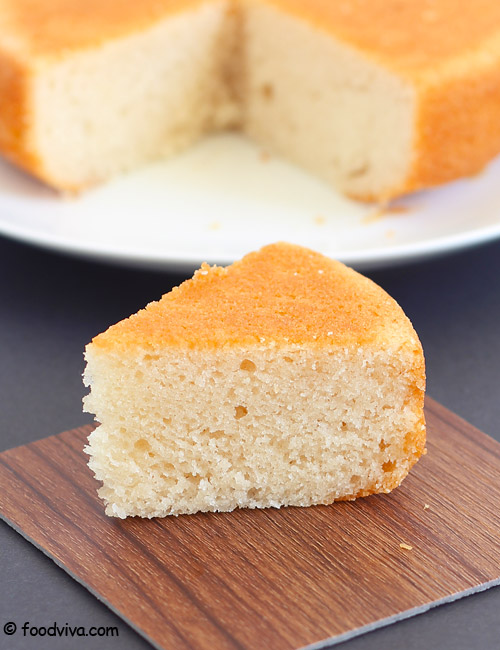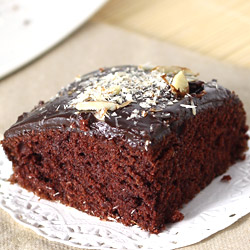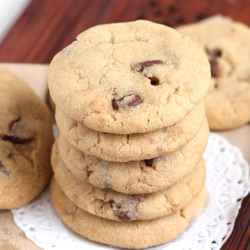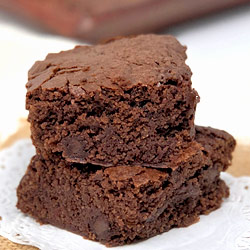Eggless Vanilla Sponge Cake Recipe (with Step by Step Photos)

More Dessert Recipes
| Ingredients: |
| 1½ cups All Purpose Flour (Maida) (approx. 200 gms) |
| 1 cup Curd (Plain Yogurt) (250 ml) |
| 3/4 cup Granulated Sugar (or 1-2 tablespoons less) (165 gms) |
| 1/2 teaspoon Baking Soda |
| 1 teaspoon Baking Powder |
| 1/2 cup Cooking Oil (any smell-less oil like sunflower oil) (125 ml) |
| 1 teaspoon Vanilla Extract or Vanilla Essence |
 Pre heat the oven to 180 degree C (356 degree F) for 10 minutes.
Pre heat the oven to 180 degree C (356 degree F) for 10 minutes. Take either two 6-inches (round or square) baking pans or one 8-inch baking pan. Grease entire surface of the pan with oil or melted butter using a brush.
Take either two 6-inches (round or square) baking pans or one 8-inch baking pan. Grease entire surface of the pan with oil or melted butter using a brush. Sprinkle some maida over it and tilt the pan in all directions so the maida covers the greased surface. Line the pan with a parchment paper (or butter paper).
Sprinkle some maida over it and tilt the pan in all directions so the maida covers the greased surface. Line the pan with a parchment paper (or butter paper). Sift 1½ cups all purpose flour (maida) in a large bowl.
Sift 1½ cups all purpose flour (maida) in a large bowl. Add 1 cup plain curd and 3/4 cup sugar in another large bowl.
Add 1 cup plain curd and 3/4 cup sugar in another large bowl. Mix well using a wired whisk until smooth. Add 1/2 teaspoon baking soda and 1 teaspoon baking powder.
Mix well using a wired whisk until smooth. Add 1/2 teaspoon baking soda and 1 teaspoon baking powder. Mix well and keep the mixture idle for 5 minutes. As the baking soda starts to react with the curd, bubbles will start to appear on the surface.
Mix well and keep the mixture idle for 5 minutes. As the baking soda starts to react with the curd, bubbles will start to appear on the surface. Add 1/2 cup oil. Use any cooking oil that doesn’t have a strong smell, e.g sunflower oil, light olive oil.
Add 1/2 cup oil. Use any cooking oil that doesn’t have a strong smell, e.g sunflower oil, light olive oil. Add 1 teaspoon vanilla extract or vanilla essence and mix well.
Add 1 teaspoon vanilla extract or vanilla essence and mix well. Add previously sifted flour (maida).
Add previously sifted flour (maida). Mix well using a wired whisk or a spatula.
Mix well using a wired whisk or a spatula. Mix until it turns little smooth and no visible signs of white flour. Do not worry if the mixture is little lumpy.
Mix until it turns little smooth and no visible signs of white flour. Do not worry if the mixture is little lumpy. Pour batter into previously greased pan. Place it in pre-heated oven and bake for 35-40 minutes at 180 C (356 F) until the top looks brown.
Pour batter into previously greased pan. Place it in pre-heated oven and bake for 35-40 minutes at 180 C (356 F) until the top looks brown. Remove the pan from the oven and insert a toothpick in the center to check whether it is fully cooked or not. If it comes out clean, then it means it is cooked. If it does not, then cook for few more minutes. If the cake turns brown from the top but remains uncooked from inside, cover the pan with aluminum foil to prevent cake from turning brown further and bake again for 5-10 minutes.
Remove the pan from the oven and insert a toothpick in the center to check whether it is fully cooked or not. If it comes out clean, then it means it is cooked. If it does not, then cook for few more minutes. If the cake turns brown from the top but remains uncooked from inside, cover the pan with aluminum foil to prevent cake from turning brown further and bake again for 5-10 minutes. Let it cool for 15-20 minutes. Run a knife on sides of the pan. Place a cooling rack (or a plate) on the pan and invert both pan and rack to remove the cake from pan easily. Carefully remove the parchment paper. It will come out very easily.
Let it cool for 15-20 minutes. Run a knife on sides of the pan. Place a cooling rack (or a plate) on the pan and invert both pan and rack to remove the cake from pan easily. Carefully remove the parchment paper. It will come out very easily. Cake is ready. Either serve it as is with coffee or garnish with chocolate syrup or vanilla frosting and enjoy.
Cake is ready. Either serve it as is with coffee or garnish with chocolate syrup or vanilla frosting and enjoy.
- Use aluminum cooker or a heavy based aluminum kadai.
- If you are using a cooker, remove the cooker ring and whistle.
- Place a stand (round shaped metal stand) in cooker and place the cake container over it. Cake container should not touched the cooker from the bottom side.
- Close the lid and cook it for 5-minutes over high flame and then 30-45 minutes (as required) over low flame.
- Check the cake with a toothpick after 30 minutes.
- The top surface of the cake will not turn brown like the cake baked in the oven but the sides and bottom surface will turn brown after baking the cake in pressure cooker.
- Make sure that cooking oil being used in this recipe doesn’t have a strong smell. We recommend using sunflower oil or light olive oil as these oils doesn’t have any aroma.
- Don’t keep the batter idle for a long time. After preparing the batter, bake it immediately. Otherwise cake will not turn soft and spongy.
- If the cake’s top turns brown but remains uncooked from inside after given time period in step-14, cover the pan with butter paper or aluminum foil to prevent cake from turning brown further and bake again for 5-10 minutes.
- Don’t worry about adding curd in the cake as you will not get the taste of curd in the cake.
- Don’t change the quantity and ratio of of curd, baking soda and baking powder as they all reacts with each other and help make cake softer.
Credits: We have adapted this recipe from this recipe.



